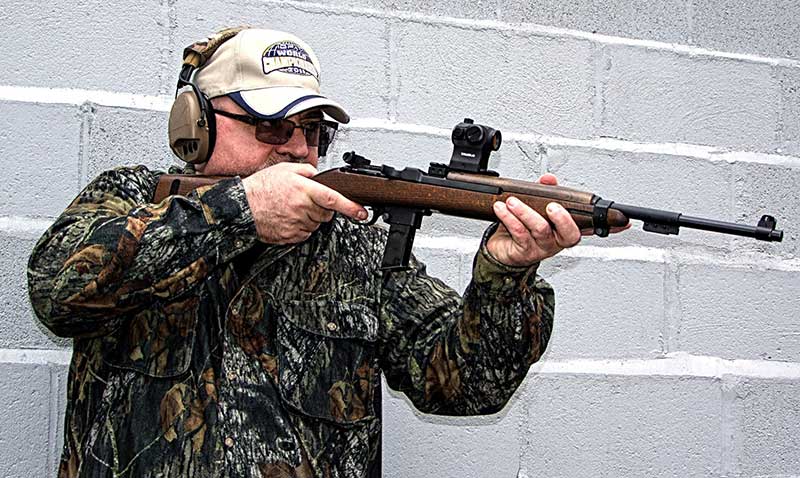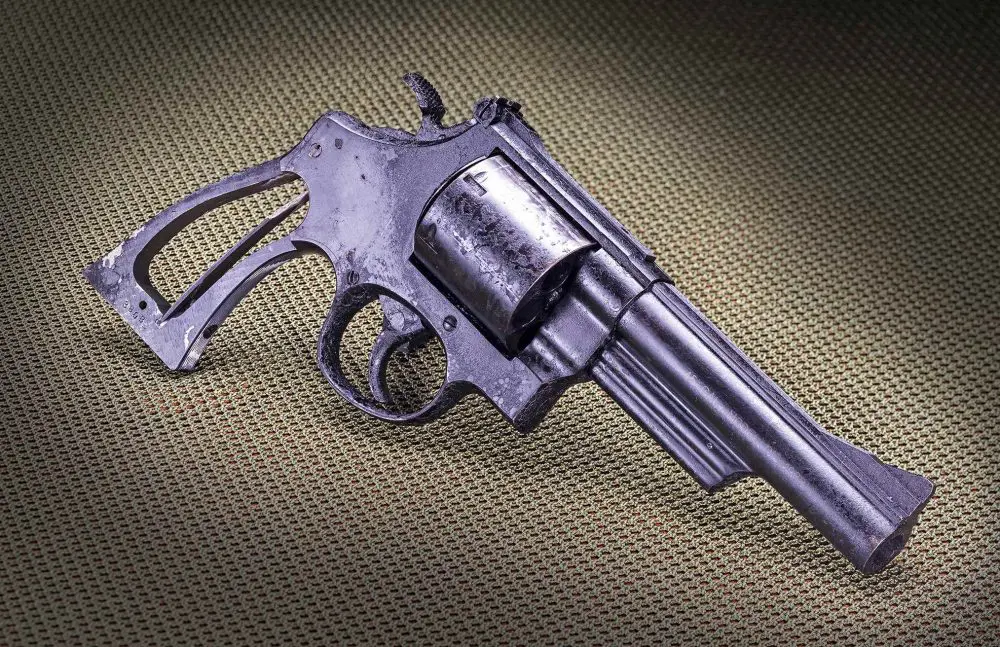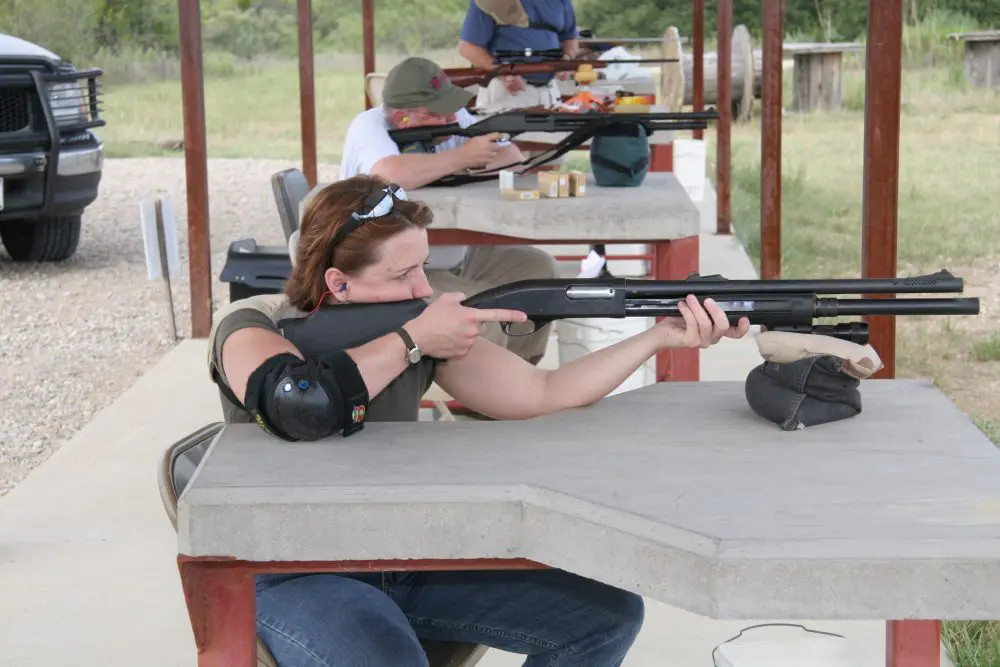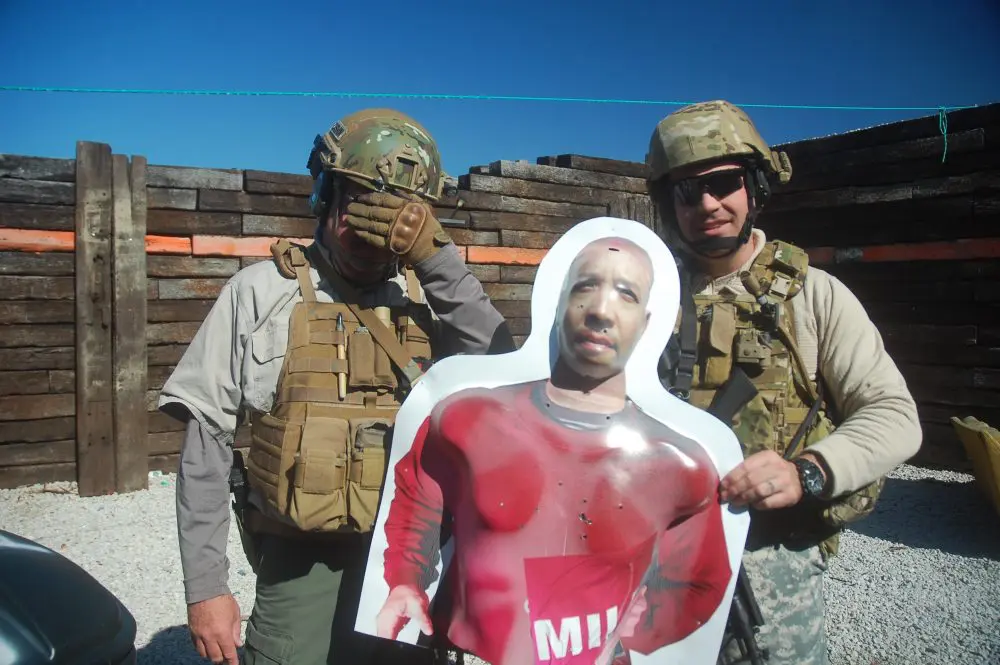Everything is perfect.
It’s one of those Halcyon summer days: clear azure sky, gently wafting breeze, nobody on the firing range to interrupt and annoy you.
The first firing string feels perfect. Your favorite carry pistol functions flawlessly, the “go lever” feels like the Trigger Fairy paid a surprise nocturnal visit during your slumbers, and the front sight is standing out like Lady Godiva at a nunnery.
And then you go downrange to admire the fruits of your prowess, to find a dozen rounds in a nifty-sized group. And all printing at ten o-‘clock from your point of aim. Not too concerned, you send down the next magazine, figuring you must have been a little sloppy on the first firing run, what with all the neato weather and stuff.
A second trip downrange elicits the same result as the first—except now you have a total of 24 rounds grouped at ten o’clock instead of a dozen. Your emotional state still one more of perplexity than anger, you decide to send another dozen rounds downrange, this time concentrating with every ounce of your being.
Reloaded after firing, you take your third hike of the day, only to find a total of 34 rounds tightly grouped at ten o’clock, plus two down at seven o’clock where you’d carefully yanked on the trigger, trying for perfection. Praying that the beautiful Trigger Fairy’s dainty gossamer wings are burning in hell, your perplexity has now metastasized into a boiling rage.
That, however, doesn’t mean that you’re a lunatic. It merely means that you’re like every other irrational firearms-shooting idiot on the planet who figures he’s never going to miss his mark. So, carefully remembering Einstein’s definition of insanity, whereby only a halfwit repeats the same thing over and over expecting a different result, you decide to employ guile and cunning.
So you do it differently the fourth time around—you aim at four o’clock. This nets you 12 bullets in the center of the target, and you’re content. Einstein and the Trigger Fairy be damned. “I won,” you smugly say to yourself.
That lasts for about half a second before you sadly realize that you’re standing alone on a shooting range muttering gibberish to yourself—and rationalizing that you still have two live rounds left from the original box of 50, just in case you miss with the first suicide round.
Maybe it’s time to rest for awhile and then try again. But no, that would make too much sense. So you reach into the pickup and grab man’s second-best friend and a handful of twelve-gauge slugs. Now you’re in full TFT (Trigger Fairy Termination) mode. And as for Einstein, what the hell did he know anyway?
But after a maniacal distribution of shotgun slugs, you look at the target through a haze of misery and self-pity and are amazed to see a ragged clover-leafed group in the center of the target. Somewhat mollified by the results, your demeanor calms down to the stage of supplanting the original thoughts of suicide with the possibility of studying up on atheism.
Obviously totally incapable of rational thought at this stage, you decide to grab your backup pistol and bust some caps. Sickeningly, these also go through the center of a fresh target. Okay, so now we’re in competition with a dead scientist and a fairy. The only thing that’s missing from the scene is the spittle and drool running down your chin.
So, since you’ve obviously lost both your sanity and most of your savings on ammunition expenditure, you may as well burn up more rounds out of your primary carry pistol. Let’s face it, you have nothing else left to lose in life. So you whale away at the stupid target with a couple dozen rounds. And as you go through your ritual of covering down and assessing after firing, you experience both the best and the worst of emotions—because the hits are all in the center of the target.
At this stage of the game, you have only three choices: (a) since you’re now hitting where you’re aiming, you can shoot yourself in the head; (b) you can drive into town and shoot everybody you see; or (c) you can calm down and diagnose what caused the group to shift in the first place.
Electing to go for the third option, you try to figure it out. In retrospect it had to have been something minor. It’s not rocket science and it really isn’t enough to get your bowels in an uproar. After all, it’s not the end of the world, or that the earth has stopped turning, or…Uh-oh. The light has finally dawned—literally and figuratively.
Once again, you take out the pistol and aim in. Perfect sight picture. Slowly you start rotating to your left, and a bright speck of sunlight reflects off the right edge of your front sight. There’s your ten o’clock groups half-an-hour ago. And the sorry situation is that this is a lot more prolific than most people think—for one reason, and one reason only. Unless you’re visually impaired, as Dr. Meir Schneider puts it, vision is more of a brain function than an eye function.
Ergo, in the above case, the camera (eye) is seeing a square-post sight, but the brain receives a false message, “seeing” a lop-sided front sight. And yes, this will happen, dependant on the location of the sun (or any other light source, for that matter) with iron sights be it a bead, aperture, buckhorn sights, etc. The net result is the same as when one encounters “shadow effect” using a glass telescopic sight—except that the shadow effect on a scope is immediately apparent to both the shootist’s eye and brain.
With iron sights, however, the back-and-forth eye-to-brain-to-eye misinformation leads to the shootist misaligning the sights with his intended mark, either vertically or horizontally. It can also cause misalignment of correct front and rear sight relationship. An example of the latter occurs when incoming sunlight hits the base of a rear aperture sight on a rifle, such as an FN FAL, an M4 carbine or a Heckler & Koch diopter ring.
While the eye sees a circle when aimed in, the brain sees a train-tunnel-shaped orifice. The shootist then places the tip of the front sight above true center of the rear aperture orifice, with resultant high point of impact. High impact will also result from strong light gleaming on the top of a front sight, be it a front-and-rear sighted weapon, or front-sight-only, such as a bead-sighted shotgun.
Why isn’t this encountered more often at training schools? Because many training organizations work to rote by lesson plan, on the same firing range, at the same time of day, facing the same compass direction, irrespective of student rate of progress. This is a good idea on a baseball field, where the batter and pitcher always face the same direction so the batter doesn’t have sunlight smacking him in the eyeballs during day games. Where did you think the term “southpaw” originated?
Since Mister Doubleday catered for the Boys of Summer long before floodlit night games, it makes sense. But you often don’t have a choice of which direction you’re facing in a gunfight, unless you’re ambushing troops at sunup while ensconced in a trench or flying a fighter plane into enemy aircraft with the sun at your back.
This author has personally observed ten-inch high hits at 30 yards from Arizona moonlight impacting the bottom of the rear aperture ring on M16 carbines, and high hits from sunlight bouncing off white snow, refracting inside the protective hood on an MP5 subgun and then re-refracted down onto the top of the front sight.
What do you do about this phenomenon? Check all of your battle guns under all light conditions—and in all compass directions. There’s a reason people have used sight black and/or spittle on their sights for hundreds of years.
Of course you could put all the fancy technological optics on all your guns—call me when they break or the batteries run down. Guns have been around for 700 years. Holographic sights have been on the market for 40. Figure it out.
Yes, every dark cloud has a silver lining. Unfortunately, so do most iron gunsights. If you want to wager your bottom dollar that it won’t happen to you, you’re not just gambling with money—you’re betting your life.
[Louis Awerbuck is Director of the internationally acclaimed Yavapai Firearms Academy. Course information and schedules are available at their website at www.yfainc.com.]






